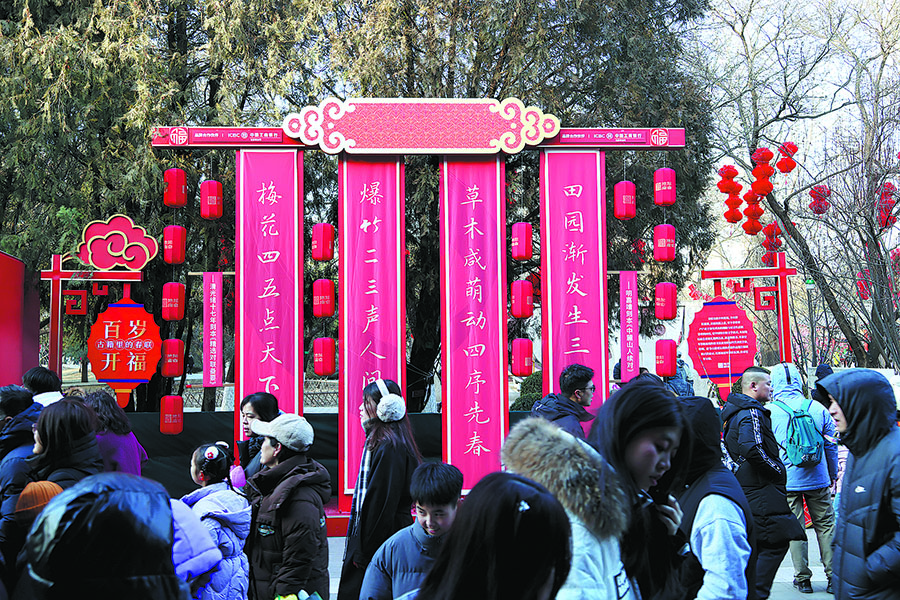
Ditan Park venue presents tantalizing glimpse of a rich and varied heritage, Cheng Yuezhu reports.
For many Chinese people, temple fairs are a must-go destination during the Chinese New Year. They are an extravaganza of festive experiences — from strolling through bustling marketplaces and admiring traditional knickknacks, to tasting street food delicacies and watching folk performances.
Temple fairs are a beloved tradition, particularly in the Beijing area, and have now been taken to a whole new level with more stalls, more elaborate decorations, and more interactive experiences, retaining their strong focus on traditional culture, but with a modern twist that captivates younger visitors.
One of the capital's better-known temple fairs is the Ditan Park Temple Fair, which is in its 37th edition this year. Running since Jan 29, Chinese New Year's Day, it ended on Tuesday.
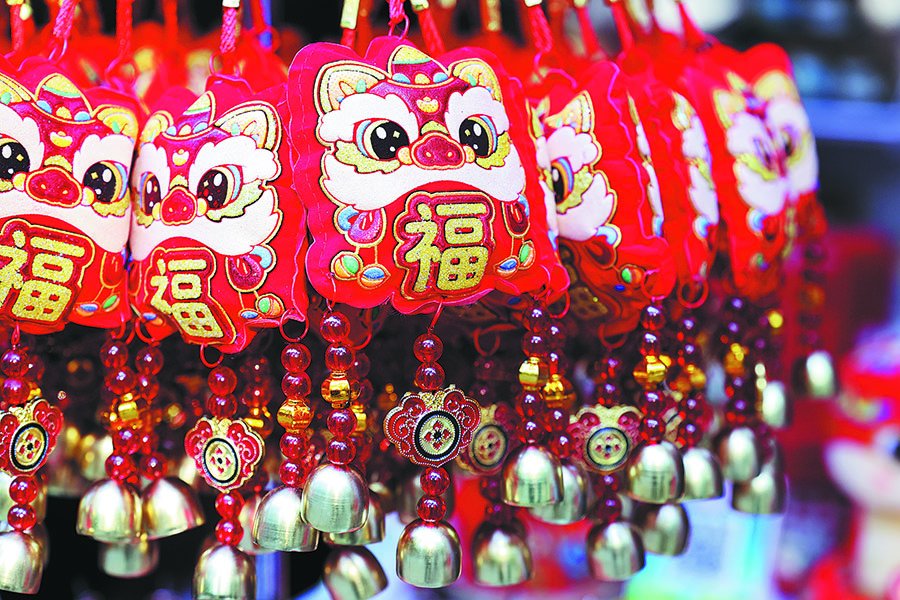
Spring Festival and its associated social practices were inscribed on the UNESCO Representative List of the Intangible Cultural Heritage of Humanity on Dec 4, and this year's fair is an amalgamation of Spring Festival traditions from around China.
"This is the first Ditan Park Temple Fair following the listing. We have not only gathered specialties from across the country, but also intangible cultural heritage elements and crafts," says Xu Ze, spokesperson for the fair, and deputy Party secretary of Dongcheng Cultural Tourism Group.
"We hope that when strolling through the fair, visitors can appreciate intangible cultural heritage. The popularity of performing arts around the fair proved that visitors have a deep recognition of Chinese culture."
The fair in Dongcheng district had four stages, including one that presented festive performing folk arts from different regions, such as lion dancing from Hebei province, drum and gong performances from Shanxi province, and stilt walking from Liaoning province.
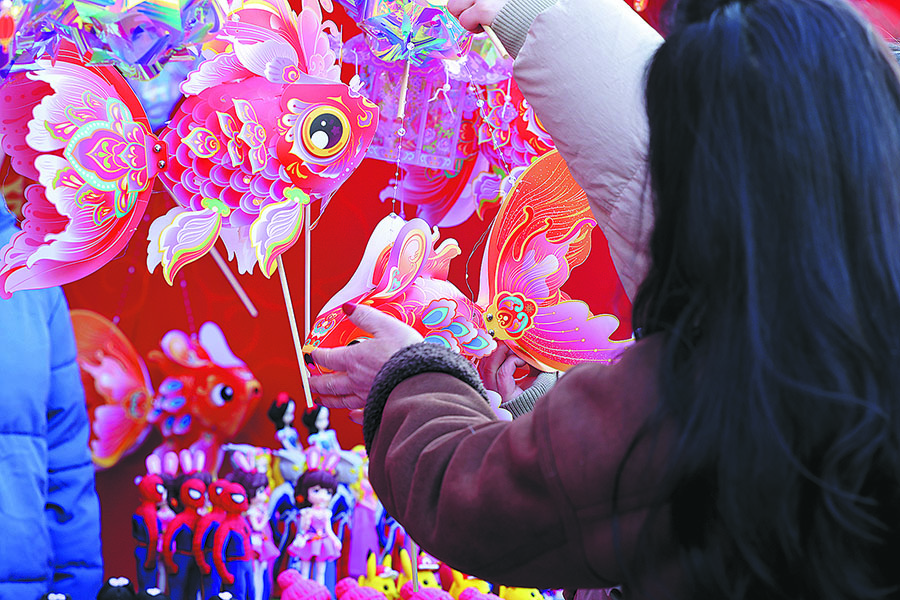
Because temple fairs have long been grounded in popular culture, another stage provided a platform for aspiring and emerging artists to demonstrate their talent, from acrobatic performances to innovative folk music.
The fair has also dug into the history of Ditan Park. Known in English as the Temple of Earth, the park was built during the Ming Dynasty (1368-1644), and was where the emperors made sacrifices to the God of Earth to pray for national stability and bountiful harvests.
Every morning, the temple fair presented a performance that revived these ancient rituals, in line with the procedures recorded in texts from the Qing Dynasty (1644-1911).
This year, the fair included a "guest province" section for the first time, with Hebei invited to showcase its wealth of folk customs.
"We hope to promote the coordinated development of the Beijing-Tianjin-Hebei region through our temple fair," Xu says.
In this special section located in the northern area of the park, Hebei presented a variety of folk performances, snacks and specialties, and intangible cultural heritage displays.
One particularly popular stall sold donkey meat burgers from Baoding, Hebei, a local specialty made with stewed shredded donkey meat in roasted, crispy buns. The technique involved in its making is recognized as a provincial-level intangible cultural heritage project.
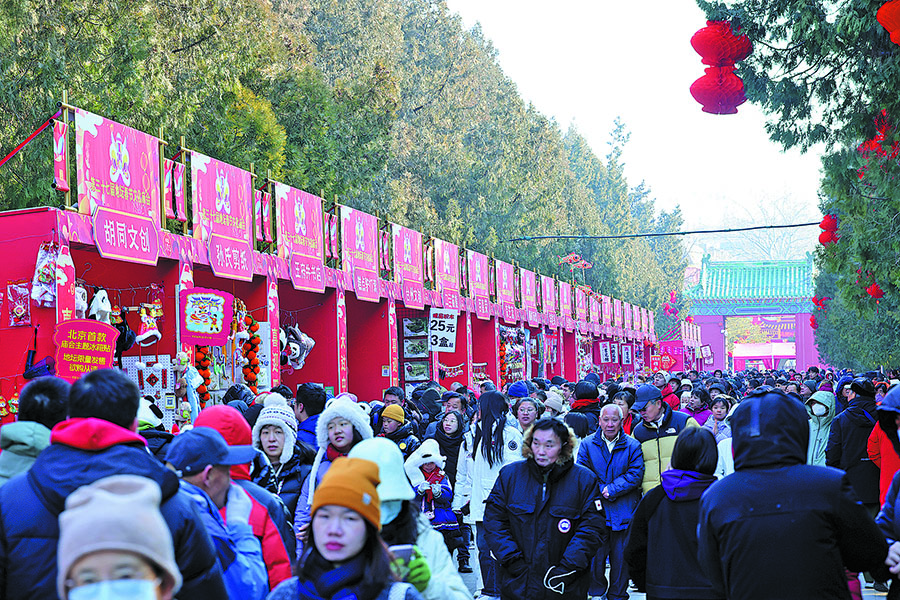
YU WANSEn, a representative inheritor, says that his team has been attending different kinds of intangible cultural markets around the country, but this was his first temple fair.
"We attended more than 10 events last year, but this temple fair turned out to be bigger, more crowded, and more vibrant than other markets," Yu says.
Spring Festival was a particularly busy period for Yu and his team, and they didn't sleep on Chinese New Year's Eve, as they were busy preparing the stall. Their efforts paid off as revenues exceeded 50,000 yuan ($6,860) on the first day.
"The temple fair is strict with food safety and quality. The organizers required us to have specific qualifications, and even before we arrived, they had been sending us all sorts of detailed guidelines about product quality standards," he says.
There was a range of intangible cultural heritage handicrafts on sale, which both added to the experience and made good souvenirs. One traditional Beijing children's toy is the tu'er ye, a clay statuette depicting the rabbit god.
Zhang Zhongqiang, a practitioner of Beijing's painted clay sculpture art, brought a range of his crafts to the fair to ring in the New Year.
Rabbit figurines were traditionally based on the rabbit companion of the goddess Chang'e, and hence associated with the Mid-Autumn Festival, but they are now more than a seasonal cultural symbol, according to Zhang.
"I created a limited edition for the Year of the Snake, with a snake winding around the base, along with propitious imagery such as osmanthus flowers and goldfish. On the front bottom of the figurine, I've written the character fu (good fortune), a traditional Chinese New Year wish," Zhang says.
He hopes that his blending of the zodiac and New Year in the figurines will bring people the joy, festivity, and renewed appeal of traditional Chinese culture.
"Tu'er ye has now expanded its influence beyond Beijing, and even China, to have an international appeal, as many visitors from abroad buy my work as souvenirs," he adds.
The 62-year-old artisan, born and raised in Beijing, says that today's temple fairs feature myriad traditional items and toys. Apart from tu'er ye, kongzhu (diabolo) and Chinese pinwheels are also popular purchases.
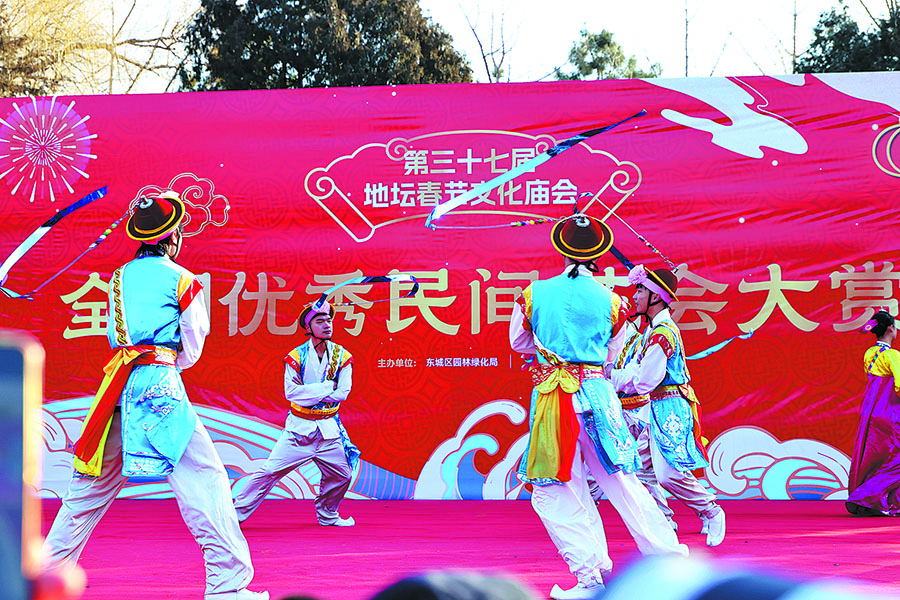
To create a more immersive experience, the fair included games and installations inspired by tradition, such as tossing coins at an installation of five bells to pray for blessings, gathering ingeniously designed stamps, and entering a quiz about Spring Festival customs to win prizes.
Five costumed performers based on the five Chinese blessings — fu, lu (prosperity), shou (longevity), xi (happiness) and cai (wealth) — roamed the park, interacting and taking photos with visitors.
"For the Spring Festival festivities, we have tried hard and introduced new upgrades to our services," Xu says.
"While preserving tradition and heritage, such as the performing arts, we have also explored new approaches, including the interactive experiences and creative merchandise. From visitor feedback, these efforts to enhance the temple fair experience have been well-received," Xu adds.


